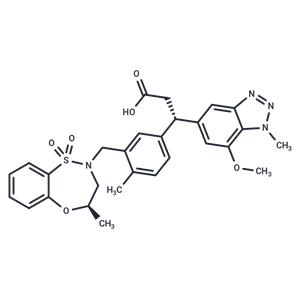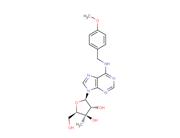| Name | KI696 |
| Description | KI696 is a high-affinity probe that potently inhibits the interaction of Keap1 and NRF2. |
| In vitro | KI696 displays high affinity for the KEAP1 Kelch domain with ITC Kd of 1.3 nM with the exception of the organic anion transporting polypeptide 1B1, the bile salt export pump BSEP and the phosphodiesterase PDE3A with an IC50 of 2.5 µM, 4.0 µM and 10 µM). KI696 causes an increase of NRF2 Nuclear Translocation in Normal Human Bronchial Epithelial cells and mRNA expression of the NRF2-dependent genes NQO1 and GCLM in NHBE cells transfected with the non-targeting siRNA in an NRF2-dependent manner[1]. |
| In vivo | KI696 induces the expression of the Nqo1, Ho-1, Txnrd1, Srxn1, Gsta3, and Gclc genes in a dose-dependent manner with EC50s of 44.0, 25.7, 42.6, 33.8, 28.4, and 44.1 µmol/kg, respectively. KI696 attenuates ozone-Induced pulmonary inflammation and restores depletion of lung GSH levels. In rats, intravenous administration of KI696(10-50 µmol/kg) results in steady state compound concentrations in the blood of 407-1437 nM[1]. |
| Storage | Powder: -20°C for 3 years | In solvent: -80°C for 1 year | Shipping with blue ice. |
| Solubility Information | DMSO : 45.0 mg/mL (81.7 mM), Sonication is recommended.
|
| Keywords | KI 696 | KI696 | KI-696 |
| Inhibitors Related | TBHQ | L-Cystine dihydrochloride | Mangiferin | Methyl 3,4-dihydroxybenzoate | Pyridoxine | Resveratrol | Luteolin | Curcumin | Ezetimibe | Oltipraz | Pyridoxine hydrochloride | ML385 |
| Related Compound Libraries | NF-κB Signaling Compound Library | Bioactive Compound Library | Anti-Obesity Compound Library | Antioxidant Compound Library | Inhibitor Library | PPI Inhibitor Library | Bioactive Compounds Library Max |

 United States
United States



